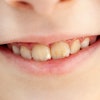
With the announcement last week that Covered California would be offering new family dental plans to consumers who enroll in health insurance coverage in 2015, you will see short- and long-term changes. DrBicuspid.com spoke with Paul Reggiardo, DDS, who is a public policy advocate for the California Society of Pediatric Dentistry and a national spokesperson for the American Academy of Pediatric Dentistry, about how these changes will impact your patients and your practice.
 Paul Reggiardo, DDS.
Paul Reggiardo, DDS.Covered California has structured its standard plan designs so that pediatric dental services are not subject to the medical deductible, which differs from some cases when dental coverage is embedded in a health plan. All individual health insurance plans sold through the exchange will include pediatric dental benefits for those younger than 19. This decision will make necessary oral healthcare much more accessible for children and more affordable for their parents and guardians, experts concluded.
But what do these changes mean to your practice? What are the longer term implications of these coverage changes?
Dr. Reggiardo said it quickly became obvious to dentists, children's advocacy groups, and the board of Covered California that the failure to require the purchase of the standalone dental plans offered in the exchange was a disappointment, at best.
"This concern was borne out when less than a third of the children enrolled through the exchange had dental coverage this year," Dr. Reggiardo said. "This plainly failed children and [it was clear] that changes had to be made in the products offered in 2015 and the way these products were offered."
While changes were needed, the goal had to remain that all children -- regardless of the economic status of their family -- could access oral healthcare, he noted.
In many ways, what these changes will mean, practically, for general or pediatric practitioners in California (and other states) is unknown, Dr. Reggiardo said.
“The embedding of pediatric dental benefits in health plans is a largely unchartered territory.”
"The embedding of pediatric dental benefits in health plans is a largely unchartered territory," he said. "It hasn't been done on a large scale before, and both dentists and patients will need to carefully monitor how this meets children's needs."
And while there are many potential positives, Dr. Reggiardo cautioned that there are still legitimate concerns when it comes to actually getting care for all children.
"We can applaud that all children insured through our state benefit exchange now have dental coverage, that the federal premium subsidy for low-income families applies to these benefits, and that pediatric dental services are not subject to a high medical deductible," he said. "At the same time, we have to be careful that 'skinny networks' with a lack of adequately trained providers for infants, children with special healthcare or developmental needs, or extensive and complicated treatment make these benefits illusionary or highly difficult to access."
One of the concerns is being able to choose a practitioner.
"We have to consider that embedded plans severely restrict parental choice as to the selection of their children's dentist," Dr. Reggiardo told DrBicuspid.com. "In order to select a health plan that allows a parent to see the medical practitioner they want for themselves or their child, they are forced into a dental plan that does not give them the same freedom of choice for their child's dental provider."
For Dr. Reggiardo, the next steps in ensuring improved coverage include the "careful and detailed assessment" of the embedded and standalone family dental plans offered in the California exchange.
"We are going to have to examine and compare enrollment figures, utilization rates, premium costs, out-of-pocket expenses, patient and provider satisfaction, and other demographic metrics to determine how well these plans are serving children," he said.
It all adds up to needing more information so practitioners and parents can make better decisions.
"Parents cannot make good choices for their children and for their pocketbook without adequate information about what they are buying -- and no one wants or deserves unpleasant surprises about their healthcare coverage," he said.
In the longer term, Dr. Reggiardo noted, there are still changes to be made to improve oral health outcomes in children.
"It is equally well understood that early and regular dental diagnostic, preventive, and treatment services result in improved oral health outcomes in infancy and childhood, as well as a lifetime of better oral health," he said. "Good oral health begins in infancy and the expansion of dental benefits to all children beginning at birth fosters this objective."



















